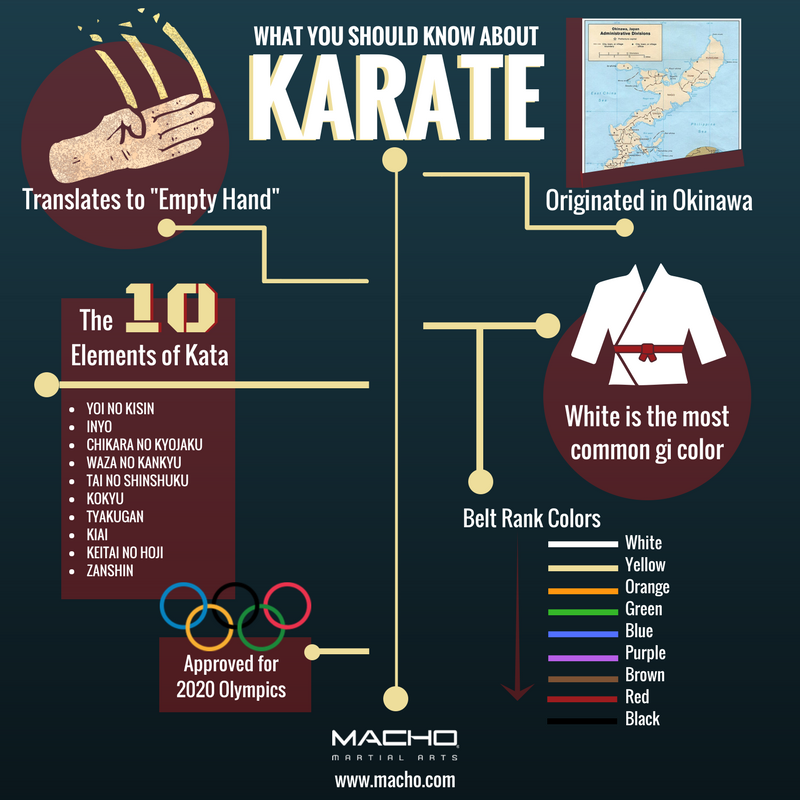Come Check Out The Fascinating World Of Martial Arts, Where Old Traditions Meet Contemporary Effectiveness - A Journey Right Into History And Approach Waits For.
Come Check Out The Fascinating World Of Martial Arts, Where Old Traditions Meet Contemporary Effectiveness - A Journey Right Into History And Approach Waits For.
Blog Article
Web Content By-Gentry Friedman
Enter the ancient globe where martial arts were born out of necessity in diverse regions. Societies crafted special fighting styles intertwined with historic contexts. Methods evolved over centuries through committed method and social exchanges. Today, contemporary martial arts mix traditional aspects for maximum effectiveness. Philosophically, martial arts stress technique, self-improvement, and consistency. Regard, humbleness, and equilibrium are foundational principles assisting professionals towards growth and resilience. Discover the midsts of this abundant background and approach to uncover the profound impacts forming this long-lasting self-control.
Origins of Fighting Style
Martial arts came from various regions around the globe, developing as sensible fight systems to resist dangers. These ancient combating styles were established out of necessity, with each society crafting techniques suited to their one-of-a-kind atmospheres and challenges. From the grappling arts of Jujutsu in Japan to the striking strategies of Kung Fu in China, martial arts were deeply intertwined with the historic, social, and social textile of their particular cultures.
In Japan, the samurai course polished martial arts like Kenjutsu, the art of the sword, which later on advanced into the more promoted kind of Kendo. Meanwhile, in Brazil, Capoeira emerged as a mix of dancing and fight, produced by enslaved Africans as a way to withstand oppression. Each fighting style brings with it a rich background and ideology, mirroring the worths and ideas of the people that exercised them.
As best martial arts movies delve into the beginnings of martial arts, you discover a tapestry of human ingenuity, strength, and the stubborn spirit of warriors throughout time.
Development of Strategies
Through centuries of technique and refinement, combat techniques within numerous martial arts have actually gone through a profound evolution. From ancient designs like Kung Fu and Karate to more modern-day techniques such as Brazilian Jiu-Jitsu and Krav Maga, the development of strategies has been driven by a mix of social impacts, practical applications, and technical improvements.
https://martial-arts-lessons-for50368.blogthisbiz.com/33610062/transforming-lives-via-fighting-style-the-increase-of-self-defense-training of this advancement is the cross-pollination of methods between various martial arts. As an example, strategies from traditional Japanese Jiu-Jitsu were integrated into the creation of Judo by Jigoro Kano in the late 19th century. This mixing of styles has actually led to the development of crossbreed martial arts like Mixed Martial Arts (MIXED MARTIAL ARTS), which integrate aspects of striking, grappling, and submission strategies.
In addition, the development of strategies has been shaped by the enhancing focus on efficiency and effectiveness in fight. Experts have continuously sought to improve their strategies through extensive training, experimentation, and competition, causing the development of highly specialized and efficient fighting styles. On the whole, the evolution of methods in martial arts reflects the dynamic nature of fight and the continuous mission for renovation and development.
Philosophical Structures
Exploring the underlying philosophical concepts of martial arts offers understanding into their core values and guiding ideas. At the heart of several martial arts self-controls is the principle of self-control itself. By training https://screenrant.com/best-fighters-karate-kid-cobra-kai/ and mind to serve as one cohesive system, you grow discipline that expands beyond the dojo or health club right into day-to-day life. This discipline encompasses regard, humbleness, and self-constraint, forming not simply your physical abilities however likewise your personality.
One more essential philosophical foundation in martial arts is the idea of continual self-improvement. The trip of mastering a martial art is never-ending, with experts frequently striving to better themselves, both physically and psychologically. This focus on development fosters resilience, perseverance, and a growth attitude that can be related to all aspects of life.
In addition, martial arts stress the importance of consistency and equilibrium. Techniques are created to use a challenger's power versus them, highlighting the principle of generating and redirecting pressure rather than meeting it head-on. This viewpoint includes interpersonal relationships, advertising serene resolutions and mutual understanding. By embracing these philosophical structures, martial artists not only improve their combat skills however additionally grow a way of life fixated personal development, regard, and consistency.
Conclusion
To conclude, the background and ideology of martial arts offer a rich tapestry of tradition, discipline, and self-improvement.
Take for example the tale of Bruce Lee, that changed martial arts by mixing different styles and philosophies to produce his own unique type of Jeet Kune Do.
With commitment and technology, martial musicians remain to press boundaries and motivate others to reach their full possibility both in battle and in life.
